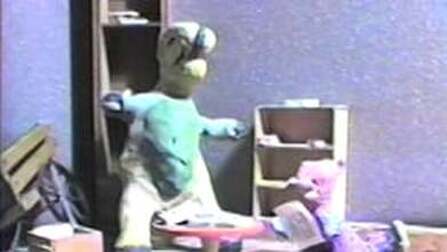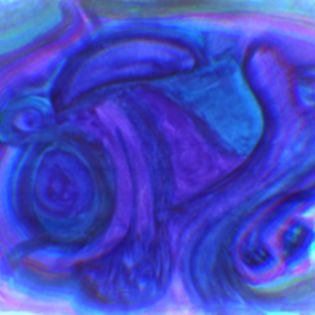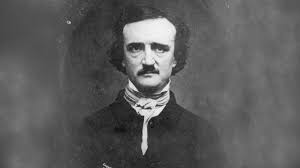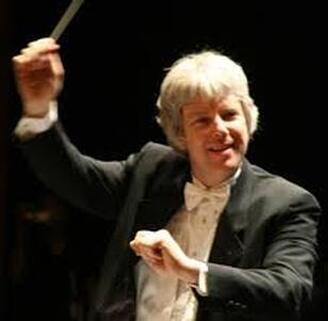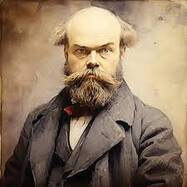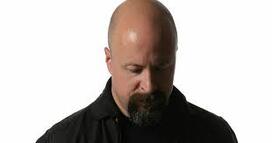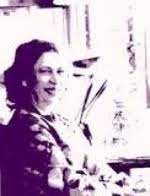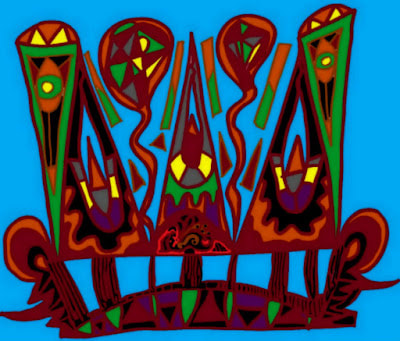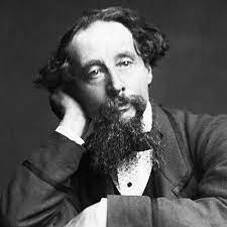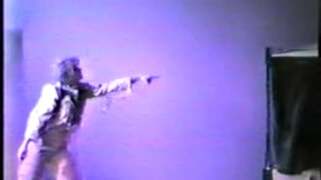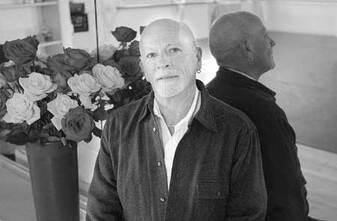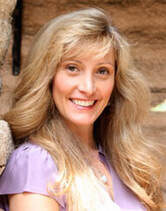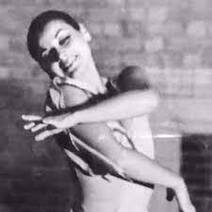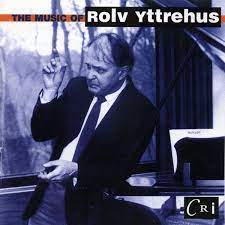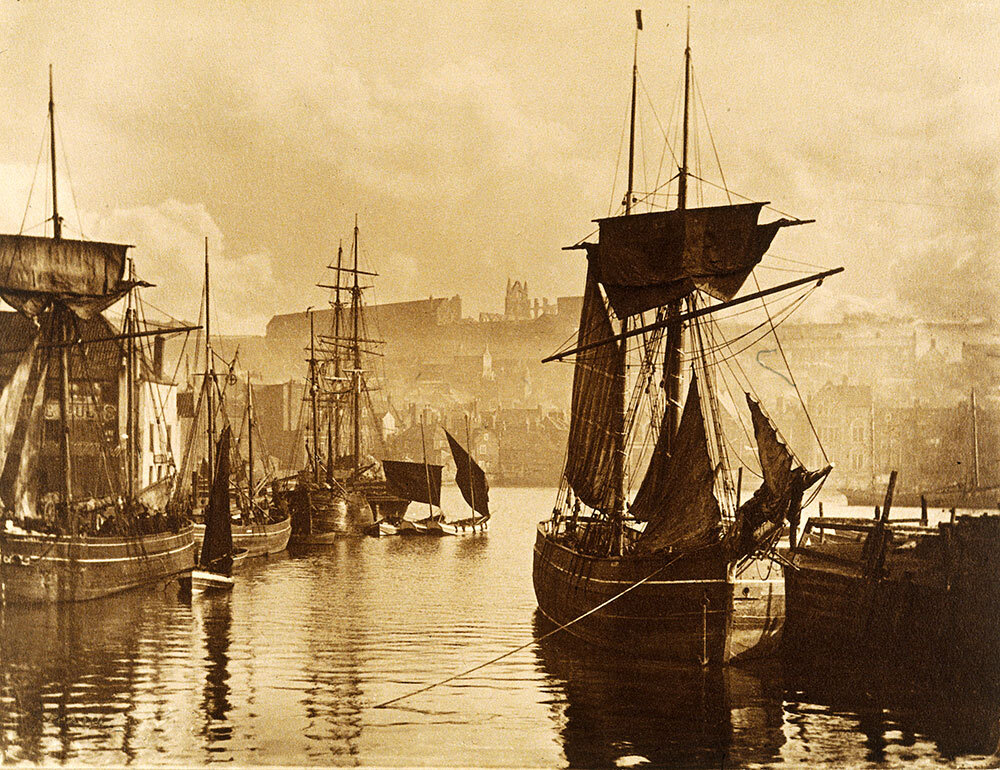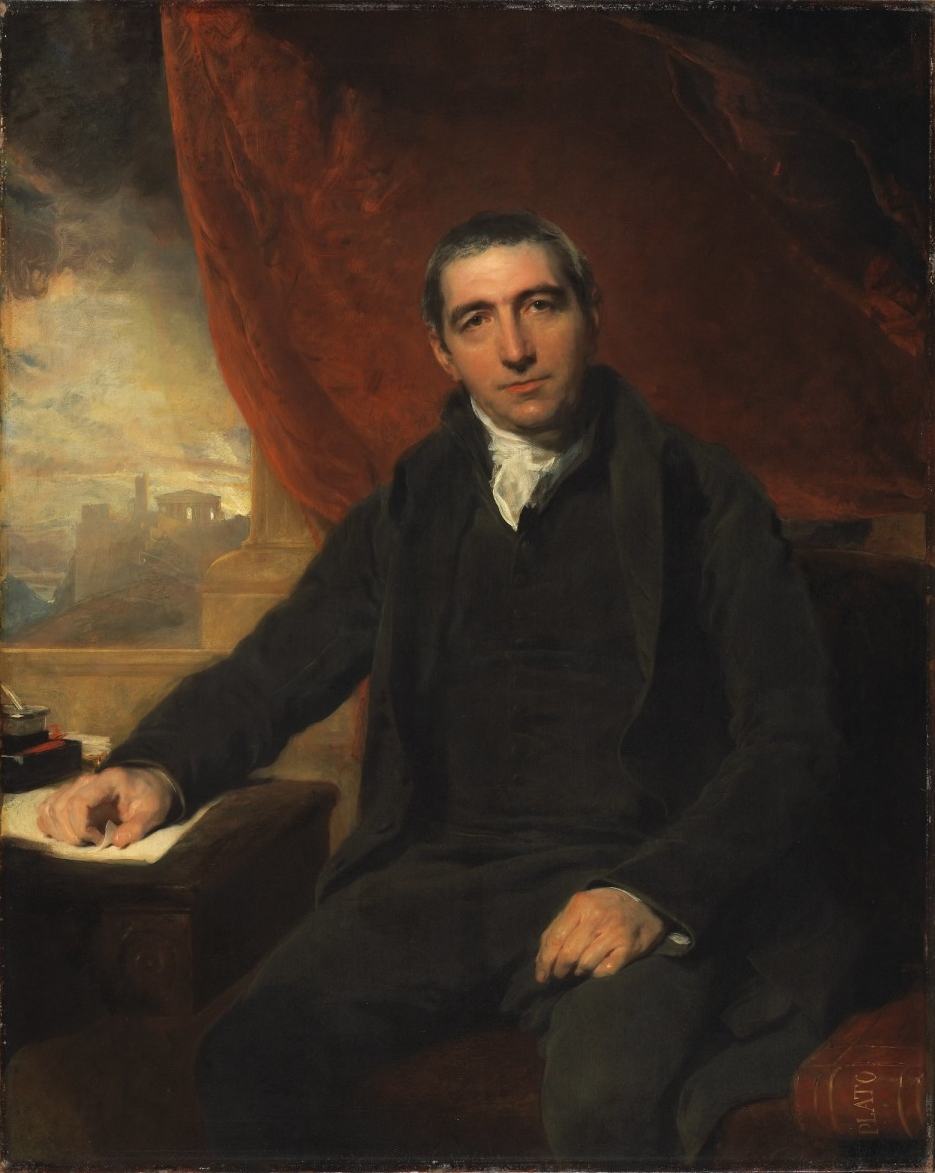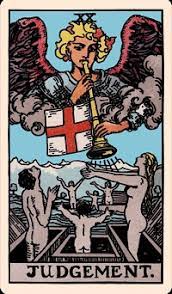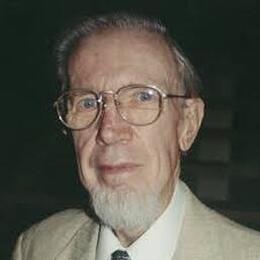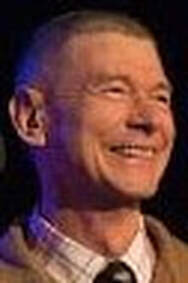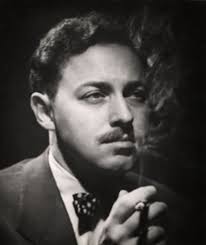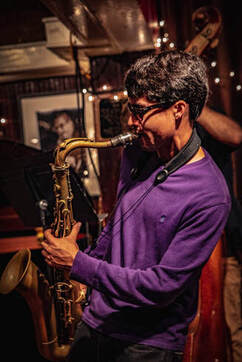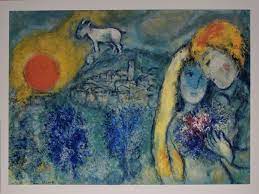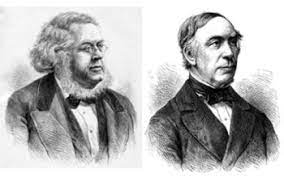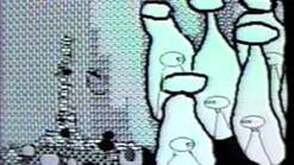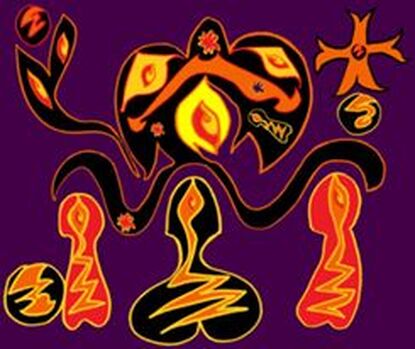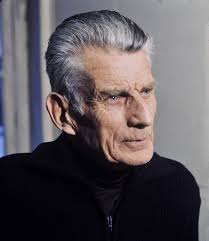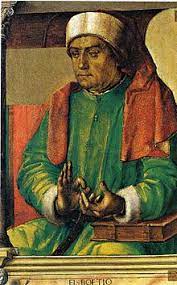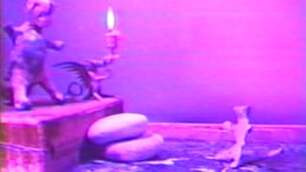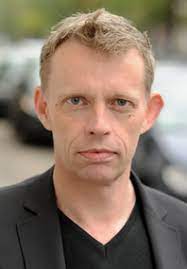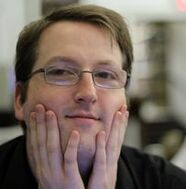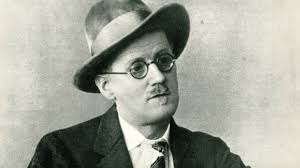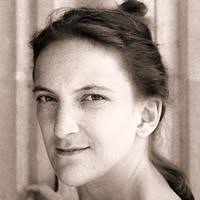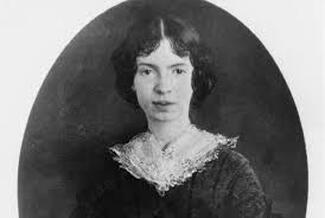Book I: Works for Medium and Large Orchestra:
Ia. Tone Poems for Medium-sized Orchestra:
1. Arcadia Blues: 6 minutes & 30 seconds: tone poem; Evokes an ancient mythical world throught the uses an atonal version of the blues mode. Unperformed
1a. Arcadia Blues: 2/2/2/2 2/2/1/1 percussion & strings. Written in February, 2022.
1b. Piano Trio #1: Arcadia Blues: for (upper voice:) flute, oboe, clarinet, violin...
(lower voice:) English horn, clarinet, violin, viola.... and piano. Originally written for flute, viola & piano at The Boston Music Center in 1993 or 1994. See I/IIIb/1.
1c. Arcadia Blues: solo instrument with piano I/IIb/1.
2. Gdo: 8 minutes & 10 seconds: tone poem: after Samuel Beckett. Completed: 9/6/21;.
2a. Gdo: 2/2/2/2 2/2/2/1 percussion, & strings. Completed on 9/6/21.
2b. Gdo: for two harps; dedicated to, & premiered by Mr. Rafferty and Virtinia Crumb; See I/II/6..Please listen to their performance and read the score below:
2a. Gdo: 2/2/2/2 2/2/2/1 percussion, & strings. Completed on 9/6/21.
2b. Gdo: for two harps; dedicated to, & premiered by Mr. Rafferty and Virtinia Crumb; See I/II/6..Please listen to their performance and read the score below:
Samuel Beckett, poet
|
3. The Masque of The Red Death: 11 minutes: tone poem; 2/2/2/2 2/2/2/1 percussion, & strings. After Edgar Allan Poe. Written when I was 21, and recorded by The Juilliard Concert Orchestra under Thomas Ludwig (picture below, left), in my senior year at Juilliard. Dedicated to Mr. Ludwig. Completely rewritten in early 2021 & 23. Otherwise unperformed. Please use the PDF belowto see revised 2023 score: |
Edgar Allan Poe: story teller
|
4. The Wood Sprite: 11 & a half minutes; ballet; 2/2/2/2 2/2/1/1 2 percussion, timpani & strings. A little girl is lost in the forest until The Wood Sprite shows her the way home. Unperformed; See IV/I/5.
Ib. Symphonies for medium & large Orchestra & Concert Band:
1. Symphony # 1. Scaramouche et Pulcinella:
30 minutes & 35 seconds: ballet: 7 movements; after the poem "Fantoches" by Paul Verlaine (photo below, left). A magician makes puppets come alive: they love, have wars, are wounded and die. Then they wish for things to be as they were. The idea that this poem should be used as an orchestral work was first suggested to me by Dr. Anna Balakian, the chairwoman of the comparaitve literature department at New York University (photo below, right). Unperformed; See IV/I/3.
1a. Scaramouche et Pulcinella: 2/2/2/2 2/2/2/1 percussion, timpani and strings; woodwind/string octet is prominent. See III/I/6.
1b. Scaramouche et Pulcinella: Synthesized realization by Michael Rafferty; cablecast on BNN-TV with the futuristic play: "Now and Then" featuring actors, TJ Norris (photo below, center) and the composer. Temporarily lost. See II/IIId/2.
1c. Scaramouche et Pulcinella: flute, clarinet, violin, 'cello and piano. In preparation for performance, with clarinetist, Romualdo Barone, at The Aichi University of The Arts, Nagakute, Japan. See I/III/3.
1d. Scaramouce et Pulcinella: original version for octet of woodwinds and strings: 1/1/1/1 1/1/1/1: I/VIII/2. Unapproved doctoral thesis at Boston Univeristy. Unperformed.
30 minutes & 35 seconds: ballet: 7 movements; after the poem "Fantoches" by Paul Verlaine (photo below, left). A magician makes puppets come alive: they love, have wars, are wounded and die. Then they wish for things to be as they were. The idea that this poem should be used as an orchestral work was first suggested to me by Dr. Anna Balakian, the chairwoman of the comparaitve literature department at New York University (photo below, right). Unperformed; See IV/I/3.
1a. Scaramouche et Pulcinella: 2/2/2/2 2/2/2/1 percussion, timpani and strings; woodwind/string octet is prominent. See III/I/6.
1b. Scaramouche et Pulcinella: Synthesized realization by Michael Rafferty; cablecast on BNN-TV with the futuristic play: "Now and Then" featuring actors, TJ Norris (photo below, center) and the composer. Temporarily lost. See II/IIId/2.
1c. Scaramouche et Pulcinella: flute, clarinet, violin, 'cello and piano. In preparation for performance, with clarinetist, Romualdo Barone, at The Aichi University of The Arts, Nagakute, Japan. See I/III/3.
1d. Scaramouce et Pulcinella: original version for octet of woodwinds and strings: 1/1/1/1 1/1/1/1: I/VIII/2. Unapproved doctoral thesis at Boston Univeristy. Unperformed.
Paul Verlaine, poet Tj Norris, artist & actor Dr. Anna Balakian, writer
2. Symphony # 2: Clover Ceres: 19 minutes; ballet; 6 movements; 2/2/2/2 2/2/1/1 percussion, timpani & strings. Illicit love is prosecuted; a jail break brings freedom. Unperformed; see IV/I/2. Finished in 2023. A semi-original tale based on dreams by myself & JS, & an Islandic fole tale.
|
3. Symphony # 3: The Great Liberator: 44 minute ballet; 7 movements; A woman frees the enslaved, is caught by the evil collector, and eventually is saved by love. Loosely based on an Islandic tale, and a dream by JS. Finished in 2023. Unperformed. Please see IV/I/3. Finished in 2023. 3a. The Great Liberator: 2/2/2/2 2/2/1/1 perc/timp. harp & strings. 3b. The Great Liberator: original version for w. w. & string octet (withheld); I/VIII/3. 3c. The Great Liberator: piano. II/IIId/4. |
The Great Liberator
|
|
4. Symphony # 4: Scrooge: A ballet for New Year's Day according to Deborah Cash, of the Boston Globe. Scrooge sees ghosts & becomes a better person.
Based on "A Christmas Carol" by Charles Dickens (photo to the right.) Please see I/V/3, II/IIId/4, & IV/I/4. 4a. Scrooge: medium orchestra 2/2/2/2 2/2/1/1 4-9 perc., pno., hrp., & strings. 67 minutes. 6 scenes, completed, January of 2024. Unperformed in this version. 4b. Scrooge: chamber version for: piano, harpsichord, harp, percussion, & solo viola. 50 minutes. Comissioned & performed by The Copley Square Ballet at The Strand Theaterin Dorchester, MA. Choreographed by David Drummond (photo below, left). Drummond was also Scrooge; Nancy Angelini, was The Spirit of The Future (photo bleow, center). The Dance Mistress was Zabelle Margosian (photo below, right). Musicians included Angelo Mammano, piano; & Michael Rafferty, harp. Dedicated to Mr. Drummond, the musicians, and the dancers of The Copley Square Ballet. see also 1/V/3. To watch the ballet Scrooge in its chamber ensemble version, 47 minutes, 6 scenes, with the orchestral score please click on Marley or Dickens' photo to the right: |
Charles Dickens, novelist
Scrooge: The Ballet
|
4c. Scrooge: orchestral score. 50 minutes, 6 scenes. Created in December of 3023 to accompany the dance video. Unperformed in this version. Please see II/IIId/4.
4d. Scrooge: piano version of original chamber version. Unperformed in this version; withheld. Please see II/IIId/4.
4d. Scrooge: piano version of original chamber version. Unperformed in this version; withheld. Please see II/IIId/4.
David Dru mmon, Scrooge/choreographer Nancy Angelini, Ghost of the Future; Zabelle Margosian, Dance Mistress
|
5 Symphony # 5: Homage to Rolv Yttrehus: 21 minutes; 4 movements.The last movement uses the last 12-tone row composed by Mr. Yttrehus. Revised, with RY quotes, completed by 4/18/23, See also II/III/3. Dedicated to Mr; Yttrehus. Both versions unperformed. 5a. Homage to Rolv Yttrehus: for orchestra: 2/2/2/2 2/2/2/1 perc/hrp & strings. 5b. Homage to Rolv Yttrehus: piano sonata #3. |
Rolv Yttrehus, composer
|
|
6. Symphony # 6. for Large Orchestra: Water Death: 18 minutes; 3/3/3/3 1p (gong, cymbal, snare drum); timp, hrp, & strings. Two movements; 2021 orchestration of Piano Sonata #2 (II/IIIb/2) as performed below by pianist, Carmen Rodriguez Peralta with "Music Now."T he story was taken from Fate Magazine: The captain of a ship murders his mutinous crew; then he sees their faces on the waves; and rise from the depths. Finished 4/17/21. Please click on the red button, below to hear Ms. Rodriguez-Peralta's performance. Please click on the photo to the right to see the complete score. |
Photograph supposedly inspired Bram Stoker's "Dracula"
|
|
7. Symphony #7. for Large Orchestra or Concert Band: Last Judgement: 20 minutes: 2a. Symphony #7 for Large Orchestra: 3/3/3/3 4/3/3/1 one or two percussion, timpani, soprano solo, and strings. Unperformed in this version. For Syphonies 1-5 please see avbove: 7b. Symphony #7 for Concert Band: 3/3/3/3 4/3/3/1 4 saxophones (SATB) one or two percussion, timpani, soprano solo and strings. The 3 movements are listed below: 1. Trumpets of the Apocalypse: 9 minutes. Unperformed. 2. Tethys: 4 minutes. requires less woodwinds: 1/0/3/3, 1 percussion in both versions. Poem: Orphic Hymn translated by Thomas Taylor. 3. Pale Horse, Pale Rider: 3 & a quarter minutes; (6 & a half with repeat); I originally wrote this double fugue for organ when I was 17. It was premiered by Dr. Sam Walter at Vorhees Chapel, Douglass College, Rutgers University, New Brunswick, NJ. Later orchestrated for concert band, & later still, for large orchestra. The concert band version was performed by John Corely & The M. I. T. Concert Band. The recording was used for "Light" was cablecast on BNN-TV as part of "Crazy Dinosaurs Deducated to Dr. Walter, Mr. Corely, & The M. I. T. Concert Band. Please click on one of the dinosaurs to hear the concert band version of movement 3: |
Thomas Taylor, poet
Last Judgement:
Rider Waite deck (1909) |
|
John Corely, conductor
of The M. I. T. Concert Band |
Book II: Concertos
|
IIa. Concertos for Two or More Soloists and Orchestra: 1. Concerto for Oboe and Trumpet: Six Chorale Preludes: 14 minutes & 10 seconds; originally "5 Chorale Preludes for Organ" dedicated to, & premiered by Harvey Burgett, See II/IIIc/5. "Concerto for Oboe and Trumpet" was completed on 8/12/21. Please click on the square in the bottom right of this PDF to see the score; and the red buttons below to listen to Mr. Burgett's performance of #s 1, 2, 4, 5, & 6. # has not been recorded. |
Harvey Burgett, organist
|
1. Down Ampney:
|
|
|
2. St. Columba:
|
|
|
4. Leoni:
|
|
|
5. In Dulci Jubilo
|
|
|
6. Homage to Robert Schumann:
|
|
|
2. Love and Death: for violin, clarinet and orchestra: 6 and a half minutes; See I/IIIb/2. Unperformed. 3. Concerto for Violin, Viola and Orchestra: Streetcar Named Desire: 15 minutes;with percussion, timpani, harp and strings. Inspired by Bronia Stephan's performace of Blanche in the play by Tennessee Williams. |
Tenessee Williams, playwright
|
4. Billy Goats Gruff: for Three Double Reeds and Orchestra:
|
6 minutes; based on a Norwegian fairy tale collected by Peter Christen Asbjørrnsen and Jørgen Moe in their "Norske Folkeeventyr." Completed on 12/10/21; See IV/III/2.
4a. Billy Goats Gruff: for orchestra and three double reeds: oboe, English horn, and bassoon: 2/2+/2/2+ 2/2/2/1 per/timp. harp & strings. 4b. Billy Goats Gruff: for string orchestra with percussion (cymbals, gong, bass drum and timpani). Unperformed in this version. See III/III/2 below for score below for score, |
Asbjørrnsen and Moe, fairy tales collectors
|
4c. Billy Goats Gruff: for string quintet: 2/1/1/1. See I/V/6.
4d. Billy Goats Gruff: Original piano version was dedicated to, & performed by Carmen Rodriguez-Peralta. See II/IIIc/2. The recording was used as the sound track for "The Train" which appeared on BNN-TV as part of "Crazy Dinosaurs." Please see the video, with the Ms. Peralto's recording, below: III/III/4.
4d. Billy Goats Gruff: Original piano version was dedicated to, & performed by Carmen Rodriguez-Peralta. See II/IIIc/2. The recording was used as the sound track for "The Train" which appeared on BNN-TV as part of "Crazy Dinosaurs." Please see the video, with the Ms. Peralto's recording, below: III/III/4.
IIb. Concertos for one Soloist and Orchestra:
1. Lunar Eclipse: Concerto for Tenor Saxophone, or Bass Clarinet: 8 minutes;
1a. Concerto for Tenor Saxophone, or Bass Clarinet: Lunar Eclipse:
with harp or piano, percussion, & strings.
1b. Concerto for Tenor Saxophone, or Bass Clarinet: Lunar Eclipse:
with harp or piano and string quintet: 2/1/1/1. See I/VII/1.
1c. Concerto for Tenor Saxophone, or Bass Clarinet: Lunar Eclipse: with piano; see I/II/8. Performed by Christian Contreras, tenor saxophone, (below, left) and Yelena Beriyeva, piano,on 1/27/12 with Boston Metro Opera. Dedicated to the performers.
To hear "Lunar Eclipse" please click on the red button below to the left below the picture to listen to "Lunar Eclipse" & use the PDF to the right to see the score:
1. Lunar Eclipse: Concerto for Tenor Saxophone, or Bass Clarinet: 8 minutes;
1a. Concerto for Tenor Saxophone, or Bass Clarinet: Lunar Eclipse:
with harp or piano, percussion, & strings.
1b. Concerto for Tenor Saxophone, or Bass Clarinet: Lunar Eclipse:
with harp or piano and string quintet: 2/1/1/1. See I/VII/1.
1c. Concerto for Tenor Saxophone, or Bass Clarinet: Lunar Eclipse: with piano; see I/II/8. Performed by Christian Contreras, tenor saxophone, (below, left) and Yelena Beriyeva, piano,on 1/27/12 with Boston Metro Opera. Dedicated to the performers.
To hear "Lunar Eclipse" please click on the red button below to the left below the picture to listen to "Lunar Eclipse" & use the PDF to the right to see the score:
2. The Hermit in The Crystal Forest: For Tenor Saxophone and Orchestra:
17 minutes and 40 seconds; for Tenor Saxophone and Orchestra:
2a. The Hermit in The Crystal Forest: tenor saxophone & 2/2/2/2 2/2/2/1 perc/timp, harp & strings. Unperformed in this version.
2b. The Hermit in The Crystal Forest: for piano solo. See II/IIId/1b.
2c. The Hermit in The Crystal Forest: 5 minute piano solo version used for "Medusa Seduca" which was cablecast on BNN-TV: a gay man on a bad hair day (the composer) has many suitors (JT Norris) before finding the perfect kiss. See II/IIId/1c.
17 minutes and 40 seconds; for Tenor Saxophone and Orchestra:
2a. The Hermit in The Crystal Forest: tenor saxophone & 2/2/2/2 2/2/2/1 perc/timp, harp & strings. Unperformed in this version.
2b. The Hermit in The Crystal Forest: for piano solo. See II/IIId/1b.
2c. The Hermit in The Crystal Forest: 5 minute piano solo version used for "Medusa Seduca" which was cablecast on BNN-TV: a gay man on a bad hair day (the composer) has many suitors (JT Norris) before finding the perfect kiss. See II/IIId/1c.
2c. The Hermit in The Crystal Forest: 5 minute piano solo version used for "Medusa Seduca" which was cablecast on BNN-TV: a gay man on a bad hair day (the composer) has many suitors (JT Norris) before finding the perfect kiss. Dedicated to Mr. Norris.
See II/IIId/1c.
See II/IIId/1c.
3. Piano Concerto: 17 minutes and 20 seconds, 3 movments; unperformed.
3a. Piano Concerto: with percussion and string orchestra.
3b. Piano Quintet: piano & string quartet: 2/1/1. See I/V/4;
3c. Piano Sextet: piano & string quintet: 2/1/1: see I/VI/2.
4. Harp Concerto: 17 minutes & 5 seconds; 2 movements: for harp, timpani and orchestra. Unperformed. See Piano Sonata #I: II/IIIb/1.
5. Violin Concerto I: 9 minutes; 3 movements; Unperformed.
5a. Violin Concerto I: with glockenspiel, optional additional percussion, & string orchestra: viola, 'cello and double bass: 0/2/2/2. Unperformed.
5b. Violin Concerto I: octet: solo violin, with glockenspiel & string sextet: 0/2/2/2.
See I/VIII/4.
5c. Violin Concerto I: violin and piano. Movement I quotes Part III #1 of The St. Mark Passion: VI/II/8. Movement III is based on "The Lord' Prayer" from "That I Did Always Love" VI/II/5/IV. Unperformed in this version. See I/II/4.
5a. Violin Concerto I: with glockenspiel, optional additional percussion, & string orchestra: viola, 'cello and double bass: 0/2/2/2. Unperformed.
5b. Violin Concerto I: octet: solo violin, with glockenspiel & string sextet: 0/2/2/2.
See I/VIII/4.
5c. Violin Concerto I: violin and piano. Movement I quotes Part III #1 of The St. Mark Passion: VI/II/8. Movement III is based on "The Lord' Prayer" from "That I Did Always Love" VI/II/5/IV. Unperformed in this version. See I/II/4.
6. Violin Concerto II: 25 minutes; 4 movements; Movments II & IV use material from the last movement of The Sonatina: II/III/1.
6a. Violin Concerto II: with medium size orchestra: 2/2/2/2 2/2/1/1 percussion, timpani, harp and strings. (Marimba featured in first movement).
6b. Violin Concerto II: with percussion, piano & strings.
6c. Violin Concerto II: with piano septet: piano & string quintet: 1/1/1/1/1. See I/VIII/3.
6d. Violin Concerto II: with piano. See I/II/10.;
7. Elegy: 6 minutes; 6a. and 6b. were completed in early August, 2021 as a re-orchestration of "Invocation" for organ (6c. below and II/I/1).
7a. Elegy: viola solo & string orchestra; unperformed in this version;
7b. Elegy: 'cello solo & string orchestra; unperformed in this version;
7c. Elegy: string orchestra: unperformed in this version; see III/III/3, below;
7d. Elegy: double bass string quartet; unperformed in this version; I/IV/6;
7e. Elegy: viola solo & piano; unperformed in this version; I/IIb/6a;
7f. Elegy: 'cello solo & piano; unperformed in this version; I/IIb/6b;
7g. Invocation: for organ; premiered by Lenora McCroskey at First Baptist in Newton, MA
commissioned by The American Guild of Organists. Dedicated to Eileen Hunt, & Ms. McCroskey. Published and Copyright held for all countries by E. C. Schirmer; See: II/I/1.
6a. Violin Concerto II: with medium size orchestra: 2/2/2/2 2/2/1/1 percussion, timpani, harp and strings. (Marimba featured in first movement).
6b. Violin Concerto II: with percussion, piano & strings.
6c. Violin Concerto II: with piano septet: piano & string quintet: 1/1/1/1/1. See I/VIII/3.
6d. Violin Concerto II: with piano. See I/II/10.;
7. Elegy: 6 minutes; 6a. and 6b. were completed in early August, 2021 as a re-orchestration of "Invocation" for organ (6c. below and II/I/1).
7a. Elegy: viola solo & string orchestra; unperformed in this version;
7b. Elegy: 'cello solo & string orchestra; unperformed in this version;
7c. Elegy: string orchestra: unperformed in this version; see III/III/3, below;
7d. Elegy: double bass string quartet; unperformed in this version; I/IV/6;
7e. Elegy: viola solo & piano; unperformed in this version; I/IIb/6a;
7f. Elegy: 'cello solo & piano; unperformed in this version; I/IIb/6b;
7g. Invocation: for organ; premiered by Lenora McCroskey at First Baptist in Newton, MA
commissioned by The American Guild of Organists. Dedicated to Eileen Hunt, & Ms. McCroskey. Published and Copyright held for all countries by E. C. Schirmer; See: II/I/1.
|
IIc. Concerto Ballets:
The Lovers: 17 & a half minutes; 6 movements; based on the myth of Orpheus & Eurydice, with a happy ending. Inspired by "The Lovers" by Marc Chagall. See I/II/ 7-11 & III/II/1-5. 1a. Flute Concerto: with percussion, timpani and strings 9/1-2/23; Alto Flute Concerto, withheld. 1b. Flute Concerto: with piano. 2a. Oboe Concerto: with percussion, timpani and strings; 2b. Oboe Concerto: with piano; in Spanish. 3a. Clarinet Concerto: with percussion, timpani and strings; |
The Lovers by Marc Chagall
|
3b. Clarinet Concerto: with piano; written for Christian Contreras.
4a. Viola Concerto: with percussion, timpani and strings;
4b. Viola Concerto: with piano; the viola concerto is the original version. It is a whole step lower than the other 3 concerto ballets; written for my husband, Drew Hubbard.
4a. Viola Concerto: with percussion, timpani and strings;
4b. Viola Concerto: with piano; the viola concerto is the original version. It is a whole step lower than the other 3 concerto ballets; written for my husband, Drew Hubbard.
Book III: Music for String Orchestra
|
1. The Star (Passacaglia): 5 minutes: written for Drew's birthday. II/IIIc/3. The card to the right, from the 1909 Rider Waite deck. 1a. The Star (Passacaglia): string orchestra. 1b. The Star (Passacaglia): string quintet: 2/1/1/1. See I/V/5. 1c. The Star (Passacaglia): piano. See II/IIIc/3. |
Star Rider Waite Deck
|
|
2. Billy Goats Gruff: 6 minutes; based on a Norwegian fairy tale collected by Peter Christen Asbjørrnsen and Jørgen Moe in their "Norske Folkeeventyr." May be used for dance. 2a. Billy Goats Gruff: for orchestra: 2/2+/2/2+ 2/2/2/1 Per/timp. harp & strings. Please see III/IIa/4 above. 2b. Billy Goats Gruff: for percussion, (cymbals, gong, bass drum & timpani) & strings. Unperformed in this version. Please use the PDF to the right to see the score: 2c. Billy Goats Gruff: for string quintet: 2/1/1/1. See I/V/6. 2d. Billy Goats Gruff: Original piano version, as performed by, & dedicated to Carmen Rodriguez-Peralta. See II/IIIc/2. The recording was used as the sound track for "The Train" which appeared on BNN-TV as part of "Crazy Dinosaurs."Please on the train or a dinosaur below to see the video with Ms. Rodriguez-Peralta's performance: |
Christen Asbjørrnsen & Jørgen Moe,
folk tale collectors |
3. Elegy: 6 minutes; for string orchestra; completed in early August, 2021. Re-orchestration of "Invocation" for organ; II/I/1. commissioned by The American Guild of Organists. Copyright held for all countries by E. C. Schirmer. Unperformed in this version.
See III/IIb/7c above.
4. Cloud Blue: 8 minutes, for string orchestra; written when I was 19, & read by The Juilliard Concert String Orchestra under Thomas Ludwig. Dedicated to Mr. Ludwig.
To see the score, please visit above: "Listen; Orchestral Music." To hear "Cloud Blue" please click the red button below:
See III/IIb/7c above.
4. Cloud Blue: 8 minutes, for string orchestra; written when I was 19, & read by The Juilliard Concert String Orchestra under Thomas Ludwig. Dedicated to Mr. Ludwig.
To see the score, please visit above: "Listen; Orchestral Music." To hear "Cloud Blue" please click the red button below:
Book IV: String and Chamber Symphonies:
1A. String Symphony I: Song of War: 3 movements. Unperformed.
1Aa. String Symphony I: Song of War: 9 minutes and 40 seconds.
1Ab. String Symphony I: Song of War: 14 minutes and 45 seconds.
1B. Chamber Symphony I: Song of War: 3 movements. 1/1/1/1 1/1/1 one percussion, timpani, and strings (2/1/1/1) may be done with a minimum of 14 players. Unperformed.
1Bb. Chamber Symphony I: Song of War: 9 minutes and 40 seconds.
1Ba. Chamber Symphony I: Song of War: 14 minutes and 45 seconds.
1Bb. Chamber Symphony I: Song of War: 9 minutes and 40 seconds.
See String Quintet version: I/V/7. The first and last movements were written first. The middle movement is from my withheld organ sonata, "12-tone Under Glass" written at age 13 and perfomed numerous times throughout the Northeastern USA, by Dr. Sam Walter. Dedicated to Dr. Walter.
1A. String Symphony I: Song of War: 3 movements. Unperformed.
1Aa. String Symphony I: Song of War: 9 minutes and 40 seconds.
1Ab. String Symphony I: Song of War: 14 minutes and 45 seconds.
1B. Chamber Symphony I: Song of War: 3 movements. 1/1/1/1 1/1/1 one percussion, timpani, and strings (2/1/1/1) may be done with a minimum of 14 players. Unperformed.
1Bb. Chamber Symphony I: Song of War: 9 minutes and 40 seconds.
1Ba. Chamber Symphony I: Song of War: 14 minutes and 45 seconds.
1Bb. Chamber Symphony I: Song of War: 9 minutes and 40 seconds.
See String Quintet version: I/V/7. The first and last movements were written first. The middle movement is from my withheld organ sonata, "12-tone Under Glass" written at age 13 and perfomed numerous times throughout the Northeastern USA, by Dr. Sam Walter. Dedicated to Dr. Walter.
|
2. String Symphony II: Paradise Regained:
3 movements; 14 minutes. 2a. String Symphony II: Paradise Regained: unperformed in this version. 2b. First Movement: Time: for piano solo; see II/IIIc/3. Written when I was 17. Premiered at The University of Vermont Summer Session for High School Students. Later it was choreographed by Nancy Angelini, and performed by her and Joe Pocaro with "Music Now & Now Dance" at The Villa Victoria in South Boston, MA, USA. See IV/III/1. The music was performed by,Eileen Feldman with "Music Now" at Holy Trinity Armenian Church in Cambridge, MA.. Dedicated to Ms. Feldman, & also to Ms. Angelini, & Mr. Pocaro. Ms. Feldman's recording was used in the clay animated video "Dinos in Space" as cablecast on BNN-TV. Please use the PDF to the right to see the score of the string orchestra version; & the button below (with Ms. Feldman's picture) to hear her recording: |
|
2c. Second Movement: Sorrow: an eight part crab canon, was commissioned b. & dedicated to Donald Maher. Unperformed. see also I/VIII/2.
2d. Third Movement: Hope: Original version for unaccompanied chorus: "Prayer of St. Chrysostom" commissioned by St. John Chrysostom Church, West Roxbury, MA. Unperformed and permanently withheld.
2d. Third Movement: Hope: Original version for unaccompanied chorus: "Prayer of St. Chrysostom" commissioned by St. John Chrysostom Church, West Roxbury, MA. Unperformed and permanently withheld.
Book V: Five Finger Symphonies:
1. Five Finger Symphonies: for 7 performers, or 6 instrumentalists with tutti violoncelli;
1. flute (piccolo & optional alto flute); 2. English horn; 3. clarinet (optional bass clarinet),
4. bassoon (contrabassoon); 5. trumpet, 6. harp & 7. cello solo or tutti violoncelli. Completed on 9/21/21. The Five Finger Symphonies may be performed as a cycle,
or individually. Originally written as "Five Finger Exercises" for piano: each hand is assigned five pitches that remain constant for the whole movement. There are 20 movements & the entire cycle is 20 minutes in duration. See II/IIIc/6. Used as the
sound track for the animated soap-opera "Dynosaur" as seen on BNN-TV.
1a. Finger Symphony #1: Littlebabysaurus: for flute, English horn, bassoon, trumpet & cello solo or tutti; in five movements: 3 mintues & 48 seconds.
1b. Finger Symphony #2: Taxes: for alto flute, bass clarinet, & harp; alternate version for flute, clarinet, harp & solo cello; in three movements: 1 mintues & 48 seconds
1c. Finger Symphony #3: Bugs: for English horn, clarinet, bassoon, harp, & cello solo or tutti; in four movements: 3 mintues & 53 seconds.
1d. Finger Symphony #4: Rocks: for flute/piccolo, English horn, clarinet, bassoon/contrabassoon, trumpet, harp, & cello solo or tutti; in three movements:
3 mintutes & 40 seconds.
1e. Finger Symphony #5: The Wedding: for flute, English horn, clarinet, bassoon,
trumpet & cello solo or tutti; in five movements: 6 mintues & 24 seconds.
1. Five Finger Symphonies: for 7 performers, or 6 instrumentalists with tutti violoncelli;
1. flute (piccolo & optional alto flute); 2. English horn; 3. clarinet (optional bass clarinet),
4. bassoon (contrabassoon); 5. trumpet, 6. harp & 7. cello solo or tutti violoncelli. Completed on 9/21/21. The Five Finger Symphonies may be performed as a cycle,
or individually. Originally written as "Five Finger Exercises" for piano: each hand is assigned five pitches that remain constant for the whole movement. There are 20 movements & the entire cycle is 20 minutes in duration. See II/IIIc/6. Used as the
sound track for the animated soap-opera "Dynosaur" as seen on BNN-TV.
1a. Finger Symphony #1: Littlebabysaurus: for flute, English horn, bassoon, trumpet & cello solo or tutti; in five movements: 3 mintues & 48 seconds.
1b. Finger Symphony #2: Taxes: for alto flute, bass clarinet, & harp; alternate version for flute, clarinet, harp & solo cello; in three movements: 1 mintues & 48 seconds
1c. Finger Symphony #3: Bugs: for English horn, clarinet, bassoon, harp, & cello solo or tutti; in four movements: 3 mintues & 53 seconds.
1d. Finger Symphony #4: Rocks: for flute/piccolo, English horn, clarinet, bassoon/contrabassoon, trumpet, harp, & cello solo or tutti; in three movements:
3 mintutes & 40 seconds.
1e. Finger Symphony #5: The Wedding: for flute, English horn, clarinet, bassoon,
trumpet & cello solo or tutti; in five movements: 6 mintues & 24 seconds.
Book VI: Parody Chamber Symphonies
1. Parody Symphony I for Chamber Orchestra: Gothic Noel: 14 minutes, 5 movements; 1/1/1/1 1/1/1/1 one percussion, timpani, piano (& optional celesta) harp and strings (2/1/1/1) may be done with a minimum of 17 players. Parodies famous Christmas carols; uses material from the withheld musical "Scrooge" that was produced by Prime Time, at Massasoit College, Brockton, MA, USA. A synthesized version was cablecast on BNN-TV in Nostrodamus 23, about a criminal held captive on a deserted planet; see II/IIId/5
2. Parody Symphony II for Chamber Orchestra: This Old Man: 24 minutes, 6 movements; 1/1/1/1 Trumpet in D; two percussion, timpani, harp and strings (1/1/1/1). May be performed by a minimum of 13 players. Parodies traditional songs and carols.
Movements II. "The Silent Knight" & V. "Lace" were played by harpist, Michael Rafferty,
at Oasis, Boston, MA, USA. Dedicated to Mr. Rafferty. See I/Ib/1.
Book VII. Solo Voice with Orchestra (See V/I)
|
1. Cascando: 12 minutes and 40 seconds: set of 4 songs for low voice to poems (under copyright (uc)) by Samuel Beckett. Unperformed. 1a. Cascando: with percussion, timpani, harp, viola solo & string orchestra. 1b. Cascando: with harp and string quartet. 1c. Cascando: with piano. 2. Orpheus in The Underworld: 15 minute cycle of 7 songs for low voice; The text, in Latin, is by Boethius.This version has an unhappy ending. (See IV/III for dance options) 2a. Orpheus in The Underworld: with percussion, timpani and string orchestra. 2b. Orpheus in The Underworld: with orchestra: 2+/2+/2+/2+ 2/2/2/1 percussion, timpani, celesta, harp and strings. |
Samuel Beckett, poet
Boetheius, poet
|
|
3. Rain has Fallen: 14 minute set of 5 songs; James Joyce; for low voice: 3a. Rain has Fallen: with orchestra: 2/2/2+/2+ 2/2/0/2/1 percussion, harp & strings; 3b. Rain has Fallen: with piano: to be premiered on March 10 by baritone, Hartmut Shultz, at Academia Arte, Alser Str. 28, 1090, Vienna. Dedicated to Mr. Shultz. |
Hartmut Shultz, lyric baritone
|
4. Deep River; 5. When The Stars Begin to Fall; & V/IIIb/4. The Unbroken Circle:
minute set of 8 In total there are 18 spirituals. The first two of these groups are orchestrated. Any of the spirituals, may be performed in whatever key and order is desired. Most of these spirituals have been performed. Dedicated to the performers:
Leo Abbott; Dorothy Yanish, Merton Brown, Barbara Roth Donaldson, Christopher
Aaron Smith, Yelena Birayeva, Annalise Scovman and Sonante.
4. Deep River: 18 minute & 10 second set of 8 spirituals: This set omits 2 songs: "I got a robe" and "Swing Low" which are better for high voice. In 2024 "Trouble" from "The Unbroken Circle" (V/IIIa/4) was added with an alternate instrumentation..
4a. Deep River: low voice & orchestra: 2/2+/2+/2+ 2/2/1/1 perc;, timp., harp & str.
4b. Deep River: low voice and piano; 9 spirituals were first performed by the composer with pianist, Barbara Roth at The First Unitarian Society of Newton, MA.. "Wayfaring Stranger" was first performed by the composer with Leo Abbott, pianist at 1st & 2nd U. U. in Boston & heard on WBZ radio.
5. When The Stars Begin To Fall: 13 minute set of 8 spirituals; "Swing Low" was first performed by soprano, Dorothy Yanish, with pianist, Merton Brown at F.U.S.N.. "When The Stars Begin To Fall" & "Peter go ring dem Bells" are unique to this group.
5a. When The Stars Begin To Fall: high voice & orchestra: 2/2+/2+/2+ 2/2/1/1 perc., timp., hrp. & str.;
5b. When The Stars Begin To Fall: high voice & piano. "Swing Low" was first performed
by soprano, Dorothy Yanish, & pianist, Merton Brown at F.U.S.N.. Please click on the button below to hear this performance:
5a. When The Stars Begin To Fall: high voice & orchestra: 2/2+/2+/2+ 2/2/1/1 perc., timp., hrp. & str.;
5b. When The Stars Begin To Fall: high voice & piano. "Swing Low" was first performed
by soprano, Dorothy Yanish, & pianist, Merton Brown at F.U.S.N.. Please click on the button below to hear this performance:
|
4b. Deep River & 5b. When The Stars Begin To Fall:
9 spirituals with piano in the high key, were performed by tenor, Christopher Aaron Smith, with pianist, Yelena Birayeva with Boston Metro Opera on 1/27/12. This performance was first posted to celebrate Martin Luther King Day, 2021. You can hear this performance by clicking on Christopher Aaran Smith (right): 4c. Deep River & 5c. When The Stars Begin to Fall: Fall: Selections performed at 1st & 2nd U. U. in Boston by Sonante (soprano Annalise Skovman with 'cello and guitar) version withheld; |
Christopher Aaron Smith, tenor
|
|
5. 2 Songs to Poems by James Joyce: 19 minutes; two songs for low voice, separated by interludes. Taken from "The Journey." See IV/IV/2 and VII/III/2. May be performed with "Three songs to Poems by James Joyce" by Merton Brown. Please click on James Joyce, to the right, to see all settings of this poet by this composer. 5a. 2 Songs to Poems by James Joyce: mallets, percussion, piano, optional harp, and D. B. string quartet or string orchestra. 5b. 2 Songs to Poems by James Joyce: with piano. 5c. 2 Songs to Poems by James Joyce: with synthesizer. Drawing, below, by Drew Hubbard. Please click the picture of Jessica Mink to read the poems to this piece and other excerts from The Journey; or click on the black button below to hear the recording by DEW: bass-baritone, countertenor, & synthesist: |
James Joyce, poet
Title with Jessica Mink, astrophsycist
|
|
5c. 2 Songs to Poems by James Joyce: with piano.
6. Remembrance of Love's Death: 21 minute cycle of 12 songs; Emily Dickinson (uc); (See IV/III for dance options). 6a. Remembrance of Love's Death: Low voice with orchestra: 2/2/2 2/2/1/1 harp, percussion & strings. See the same selections in Volume V, Book I. 6b. Remembrance of Love's Death: Low voice with harp & double bass string quartet or string orchestra. See the same selections in Volume V, Book I. 6c. Remembrance of Love's Death: for low voice with piano. 9 of the 11 songs were performed by the composer with pianist, Eileen Feldman at 1st and 2nd Unitarian Society, Boston. Dedicated to Ms. Feldman. Please click on Eileen Feldman to the right to hear the premiere; and on Emily Dickinson to see a list settings by this composer of her work. |
Eileen Feldman, accompanist
Emily Dickinson, poet
|
